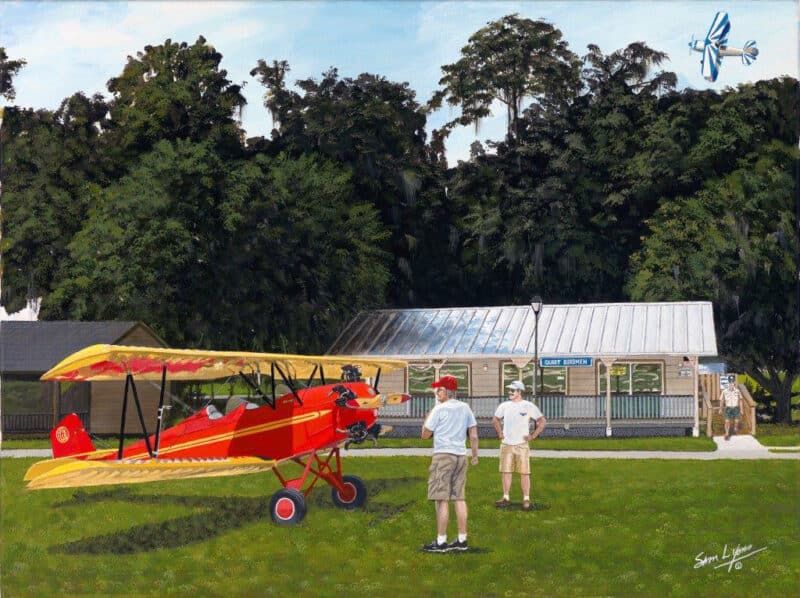Description
Magnificent Machines! Who could possible decide between these two magnificent machines. A 1935 Studebaker Commander and a 1929 TravelAir 3000. Buy this print and you can own both!
About the Studebaker Commander
Studebaker began using the Commander name in 1927 and continued to use it until 1964, with the exception of 1936 and 1959-63. The name was applied to various products in the company’s line-up from year to year.
The first Commander, in 1927, was a continuation of the mid-range Special Six, with a 226 cu in (3.7 L) engine. Their inbuilt durability and toughness gained them great renown under worldwide conditions. The 1928 GB Commander was a descendant of the Big Six, being powered with the proven 354 cu in (5.8 L) engine, modified to deliver 75 bhp (56 kW; 76 PS) at 2400 rpm. In October 1928, three Commander sixes lined up at the Atlantic City Speedway to challenge the 15,000 mi (24,000 km) speed record (64.25 mph (103.40 km/h)) held by the much higher-priced Auburn straight-eight Speedster.
These sixes were the last descendants of rugged cars designed for poor roads in the early 20th century. Loaded with torque and strong in construction. They were less well suited to the higher cruising speeds made possible by better roads in later years.
In 1929, Studebaker added an 8-cylinder Commander to the range.
Studebaker introduced the Champion in 1939, and the Commander line was again repositioned, now as the mid-range vehicle.
History of the TravelAir 3000
The Travel Air 2000/3000/4000 were open-cockpit biplane aircraft produced in the United States in the late 1920s by the Travel Air Manufacturing Company. During the period from 1924–1929, Travel Air produced more aircraft than any other American manufacturer. This included over 1,000 biplanes. While an exact number is almost impossible to ascertain, some estimates for Travel Air as a whole range from 1,200 to nearly 2,000 aircraft produced.
The Travel Air biplanes were conventional single-bay biplanes with staggered wings braced by N-struts. The fuselage was fabric-covered welded steel tubes. The tubes were matched with wooden battens and they had two open cockpits in tandem. The forward cockpit carried two passengers side by side.
In common with the Fokker D.VII that they resembled, the rudder and ailerons of the first Travel Air biplanes had an overhanging “horns” to counterbalance the aerodynamic loads on the controls. This helped to reduce control forces and made for a more responsive aircraft. These were the distinctive Travel Air “elephant ear” ailerons which led to the airplane’s popular nicknames of Old Elephant Ears and Wichita Fokker.
The Travel Air biplanes were noted for their good flying qualities which may have helped Travel Air outsell all rivals by 1929.
Beautiful Machine Combinations
See other combination prints by Sam Lyons on this website:
Classic Toys
https://lyonsstudio.com/product/classic-toys/
Field of Dreams
https://lyonsstudio.com/product/field-of-dreams/
Print Details
The 16” x 22” prints are available in a Limited Edition size of 100 Signed and Numbered.




Reviews
There are no reviews yet.